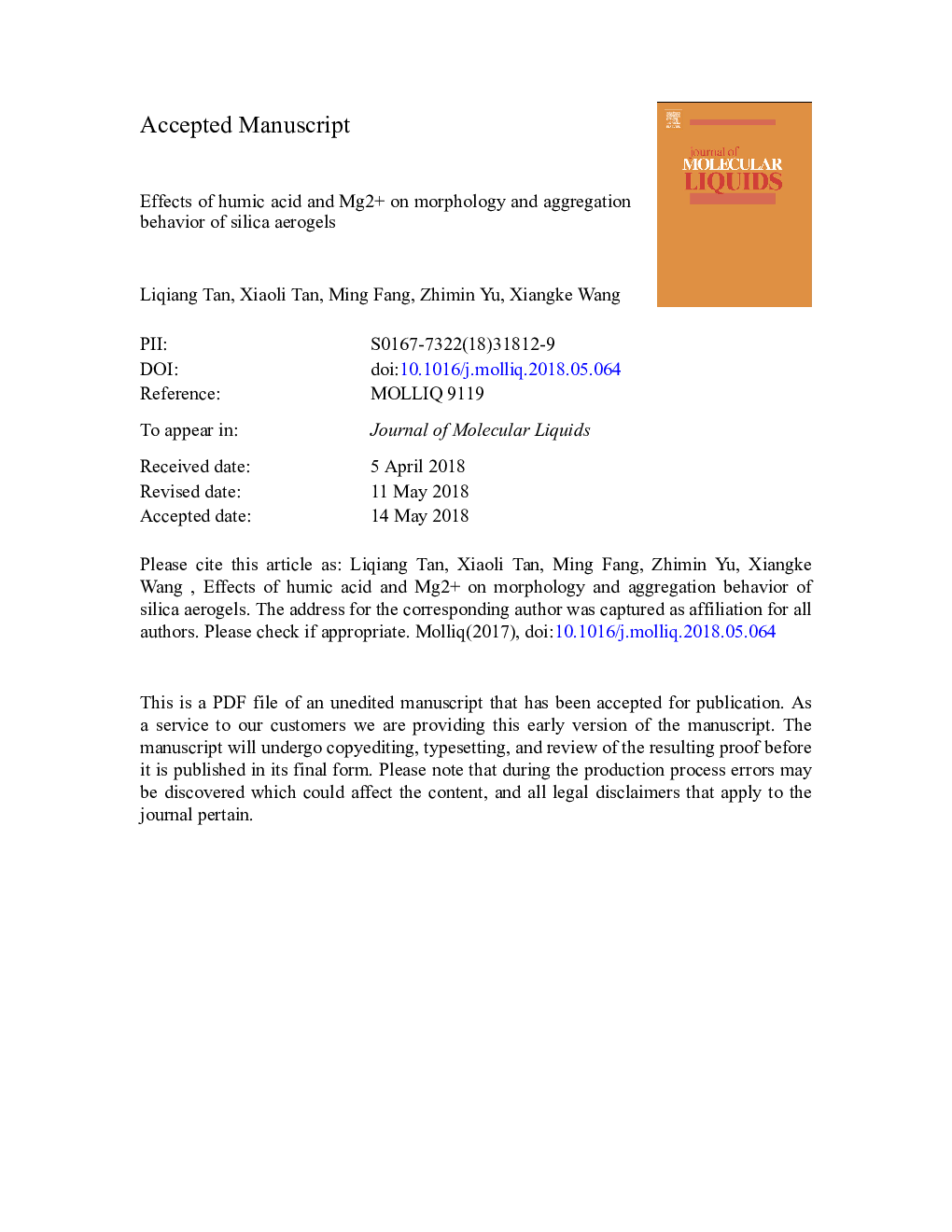| Article ID | Journal | Published Year | Pages | File Type |
|---|---|---|---|---|
| 7842103 | Journal of Molecular Liquids | 2018 | 33 Pages |
Abstract
With the widespread use of nanomaterials, the impacts of nanoparticles on environment have attracted great concern. In this study, the effects of HA and Mg2+ on the aggregation of silica aerogels were investigated for understanding the fate and transport of silica aerogels in aqueous environments. Dynamic light scattering (DLS) was used to monitor the size distribution of the silica aerogels. Zeta potentials of HA and silica aerogels both exhibit strong negative surface charge at pHâ¯2 to 12 due to their surface functional groups. The reunition of silica aerogels is due to the electrostatic destabilization which could be explained by the classic Derjaguin-Landau-Verwey-Overbeek (DLVO) theory. The combination of HA endows silica aerogels with a high critical coagulation concentration (CCC), which means that HA reduces the aggregation of silica aerogels at low Mg2+ concentration due to the electrostatic repulsion and steric hindrance effects. Whereas, HA increases the aggregation of silica aerogels when the concentration of Mg2+ ions is higher than CCC, which is because the HA-Mg2+ chemical bonds, formed in the reaction process, act as bridge among silica aerogel aggregates. The colloid interface morphology of silica aerogel aggregates was characterized by transmission electron microscopy (TEM). The complexation between Mg2+ ions and HA plays a critical role in silica aerogels' aggregation and is the main mechanism to increase the aggregation. These findings of the significant effects of HA and metal ions on the aggregation of silica aerogels are important for better understanding the transport and subsequent transformation of silica aerogels in aquatic environments.
Related Topics
Physical Sciences and Engineering
Chemistry
Physical and Theoretical Chemistry
Authors
Liqiang Tan, Xiaoli Tan, Ming Fang, Zhimin Yu, Xiangke Wang,
